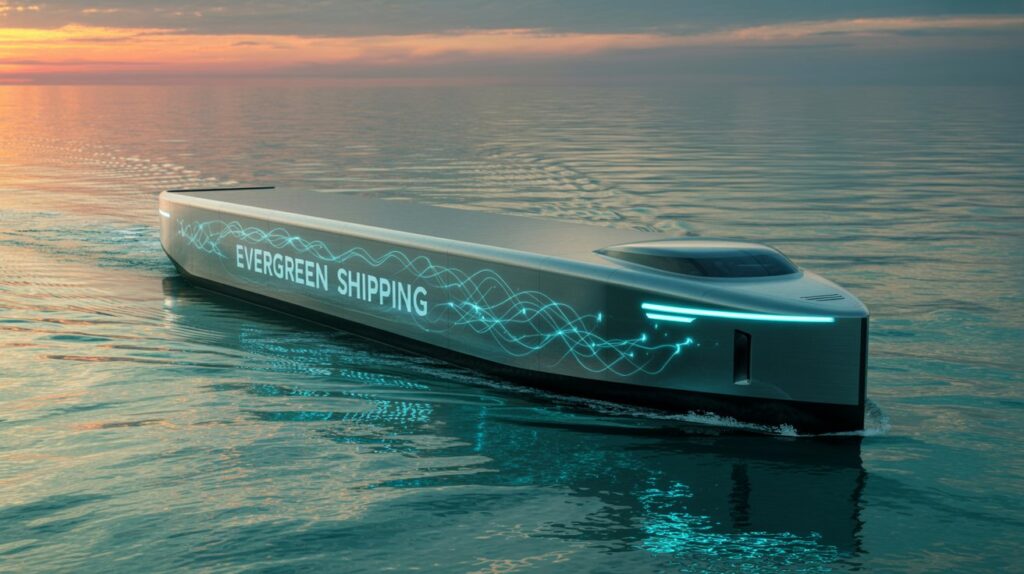Market Outlook and Growth Dynamics
The electric ship market is projected to expand from USD 4.85 billion in 2025 to USD 18.39 billion by 2032, reflecting a CAGR of 21.0%. This growth trajectory underscores a pivotal transformation within the maritime industry, where electrification is emerging as a cornerstone of global decarbonization strategies. Regulatory measures from the International Maritime Organization (IMO), coupled with regional emission reduction frameworks, are compelling operators to transition away from conventional fossil-fuel propulsion toward cleaner alternatives.

Beyond regulations, fluctuations in crude oil prices and the rising operational costs of conventional fleets are reshaping investment strategies, making electrification more financially viable. Technological innovations in marine batteries—particularly in terms of energy density, safety, and lifecycle management—are also improving the feasibility of electric and hybrid ships, extending their application beyond short-sea ferries to larger vessels.
Download PDF Brochure @ https://www.marketsandmarkets.com/pdfdownloadNew.asp?id=167955093
Ship Type Analysis: Commercial Vessels at the Forefront
By ship type, the commercial segment holds the largest market share. Ferries, inland waterway vessels, and short-haul cargo carriers are primary adopters due to their predictable routes, frequent port calls, and compatibility with existing charging systems. Europe, Asia-Pacific, and North America are accelerating adoption through green financing, carbon credit mechanisms, and port infrastructure upgrades.
Passenger ferry operators are particularly motivated, as sustainability initiatives are now directly tied to consumer demand and brand reputation. The ability to demonstrate lower lifecycle emissions not only ensures regulatory compliance but also provides a competitive edge in winning contracts and subsidies.
Point of Sale Analysis: Hybrid Systems Leading Transition
From a technology adoption perspective, the hybrid segment dominates due to its balance between sustainability and operational reliability. Hybrid propulsion integrates advanced batteries with conventional diesel or LNG engines, delivering reductions in both fuel consumption and carbon emissions without compromising on endurance. This technology is critical for cargo vessels, offshore support ships, and naval fleets, where fully electric solutions are still constrained by current battery capacity.
Hybrid solutions also present a compelling economic case: they typically involve lower upfront capital expenditure than fully electric systems while enabling measurable reductions in operational costs. Furthermore, hybridization helps extend engine life, reduce load variations, and optimize overall energy efficiency—key considerations for commercial operators navigating volatile fuel markets.
Regional Insights: Europe Leading the Charge
Europe remains the global leader in electric ship adoption, supported by binding climate policies and substantial government-led investments. The EU’s “Fit for 55” initiative mandates a 55% reduction in greenhouse gas emissions by 2030, directly influencing maritime operators. Norway, Germany, and the Netherlands are early adopters, deploying fleets of fully electric and hybrid ferries, often supported by robust port-side charging infrastructure.
In Asia-Pacific, China, Japan, and South Korea are expanding R&D programs and pilot projects to electrify regional shipping lanes. Meanwhile, North America is gradually scaling up adoption through U.S. port authority funding, particularly for short-sea and inland waterway routes.
Ask for Sample Report @ https://www.marketsandmarkets.com/requestsampleNew.asp?id=167955093
Key Market Players and Competitive Landscape
The electric ship market is consolidated among a few global players, with ABB (Switzerland), Wärtsilä (Finland), GE Vernova (US), SCHOTTEL Group (Germany), and Corvus Energy (Norway) driving innovation. Their strategies focus on:
- R&D investment in next-gen battery systems and power management solutions.
- Partnerships with shipbuilders to integrate propulsion systems during vessel design.
- Public-private collaborations for infrastructure deployment at major ports.
- Aftermarket services for retrofitting and maintenance, which is becoming an attractive revenue stream as existing fleets undergo electrification upgrades.
Strategic Outlook
The electric ship market is at a crucial inflection point. While regulatory pressure remains the strongest adoption driver, the long-term competitiveness of electric vessels will be determined by advances in energy storage, charging infrastructure, and alternative fuels integration. Stakeholders must focus on scaling production, standardizing charging solutions, and addressing cost barriers to accelerate mainstream adoption.
